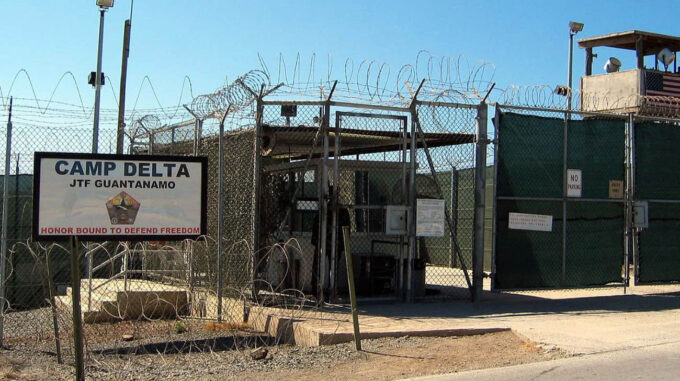Threat of a new wave of mass deportations: secret transportation of thousands of migrants to Guantanamo Bay; tensions and new controversies building in the United States

In diplomatic and legal circles in the United States, there is information that could trigger a quiet explosion of new immigration crises. According to the reputable American publication The Washington Post, the Trump administration is already preparing a large-scale secret plan to relocate thousands of foreigners who have unlawfully found themselves in the U.S. to the Guantanamo military base. This news has caused significant unrest both within the United States and internationally, as it concerns a plan that could seriously impact America's image and cast doubt on its immigration policies. Sources familiar with the matter reveal that discussions about preparing to evacuate around nine thousand migrants have been underway since the beginning of the week. According to these sources, the Trump administration plans to inform foreign governments—particularly allied European countries such as the UK, France, and Germany, as well as neighboring nations in Central and Eastern Europe including Poland, Lithuania, Italy, and Ireland—about these actions. However, not all countries will receive direct notifications; U.S. authorities are inclined to carry out this large-scale operation secretly, without notifying diplomatic missions. A key step in the preparations involves medical examinations of about nine thousand individuals. This is to assess their physical and psychological capacity to endure prolonged detention in a closed environment. Experts and critics, however, question whether the detention of such a large number of people at Guantanamo Bay—already resembling a military prison—can handle this task. Unofficial sources indicate that in 2024, plans are underway to send up to 30,000 migrants—a sharp and significant increase compared to the few hundred held there at the start of the year. Additionally, a document reviewed by sources notes that the active policy of detaining migrants at Guantanamo serves other purposes as well—namely, creating opportunities for longer-term detention. This raises concerns among human rights advocates, as historically, such practices are considered violations of international standards of humanitarian treatment, especially given that the base was previously used as one of the main detention points for suspected terrorists. Officially, U.S. government representatives claim that these measures are primarily aimed at relieving internal detention centers, which have been growing overcrowded and inefficient due to Trump’s promises of the largest deportation campaign in the country’s history. They argue that the need for additional space has arisen because many migrants from conflict zones or regions experiencing internal crises have already entered the U.S. illegally. Critics, however, assert that such plans—potentially drastically changing the status quo of U.S. immigration policy—are irresponsible and even provocative responses to external challenges. Regarding renewed efforts to utilize Guantanamo, informants from the defense and immigration sectors emphasize that the base currently continues to serve as a detention site for prisoners of war and suspected terrorists, and its capacity to hold thousands of new detainees without substantial investment is limited. Officials point out that the transfer of prisoners from Guantanamo to the U.S. mainland was actively discussed as early as 2006, when the Supreme Court recognized that detainees are covered by the Hague Convention. At that time, the goal was set to close this military prison and transfer some detainees to civilian facilities in the states, but this process remains lengthy and tense. Now, once again, there is a possibility of returning to a harsher policy, indicating a tightening of immigration and security measures in the U.S. It is evident that the upcoming steps by the Trump administration will provoke not only domestic rejection but also critical reactions from American allies and international human rights organizations. Most of the foreign nationals targeted for deportation or transfer to Guantanamo are in the U.S. illegally. Although many countries have expressed willingness to accept their nationals and cooperate on immigration issues, they often lack the capacity for swift action, and coordination remains weak. This plan—subject to change and modification—once again highlights the increasing departure from traditional democratic approaches to migration and security. If implemented, it could trigger a major political and diplomatic scandal, as the international community and human rights defenders will once again question the values and principles of the democratic world, which, in light of this initiative, appear to be under threat. **Note:** Guantanamo Bay detention camp is a visible symbol of American military history. Established in 2002, this facility has been known worldwide for over twenty years for its harsh conditions, human rights violations, and secrecy. It has held detainees suspected of terrorism, many of whom were held without trial, sparking widespread international controversy and debate. As a military prison and camp, it became a symbol of challenges related to adhering to international humanitarian standards and human rights law. In 2006, the U.S. Supreme Court ruled that even detainees are protected under the Hague Convention, which led to plans to close the facility and transfer many detainees to civilian courts and penal institutions in the states. The unfolding events surrounding the potential reactivation of Guantanamo as a site for holding thousands of migrants evoke deep concern and intense debate over the future of American immigration policies and the country’s international reputation.

